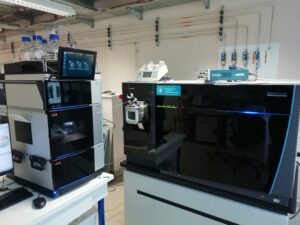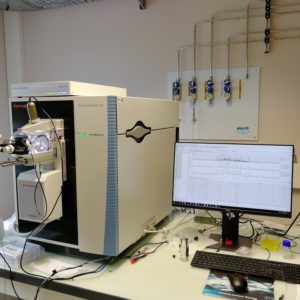The EDyP team (CEA – Inserm – UGA UA13 BGE / CEA – CNRS FR2048 ProFI) has just acquired a...
Read MoreThe EDyP team’s proteomics activities are supported by a range of instruments currently comprising two automated liquid handling workstations for biochemical preparation of samples, five liquid chromatography systems and four mass spectrometers for sample analysis.
The laboratory is equipped with four mass spectrometers.
The mass spectrometers can be coupled with any of our six liquid chromatography systems.
We can use two automated systems to carry out biochemical processes for sample preparation.
Mass spectrometers
Two Orbitrap Q Exactive HF (Thermo Fisher)
The two Q-Exactive HF are equipped with NanoSpray Flex ion source and was installed in 2016. They are coupled to nanoRSLC U3000. They are dedicated to:
- Bottom-up protein identification (high load)
- Quantitative proteomics
- Targeted quantification
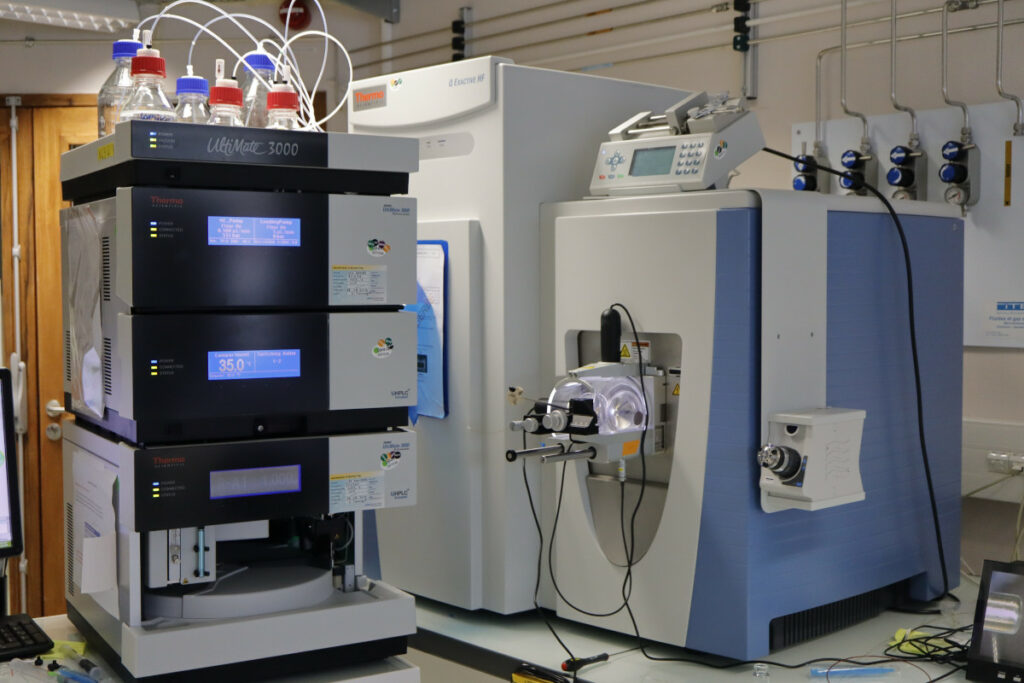
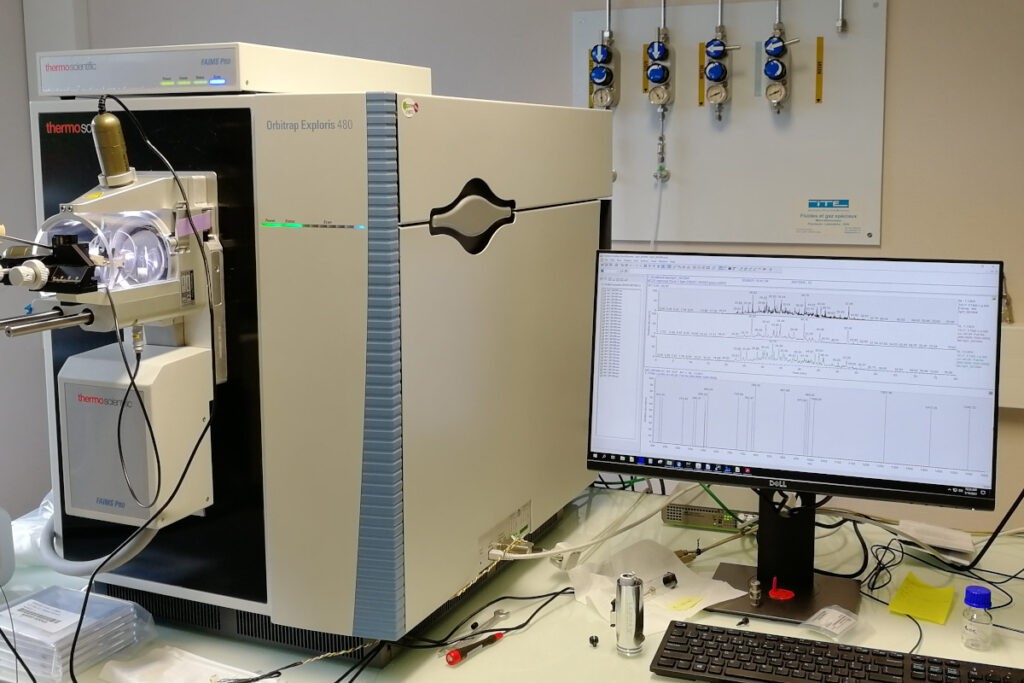
Orbitrap Exploris 480 (Thermo Fisher)
The Exploris 480 is equipped with NanoSpray Flex ion source and FAIMS interface. It was installed in 2021. It is coupled to a nanoRSLC U3000 system. It is dedicated to:
- Bottom-up protein identification (low-input amount)
- Quantitative proteomics
- Deep proteome coverage
- Xlink peptides analysis
- Targeted quantification
Orbitrap Ascend Tribrid (Thermo Fisher)
The Ascend Tribrid is equipped with NanoSpray Flex ion source and coupled with a Neo Vanquish system. It was installed in 2023. Several options are available, including ETD and PTCR fragmentation modes, as well as a high mass range capability. It is dedicated to:
- Bottom-up protein identification
- Quantitative proteomics
- TMT quantification (MS3)
- Post translational modification analysis
- Xlink peptides analysis
- Middle/Top-down protein analysis
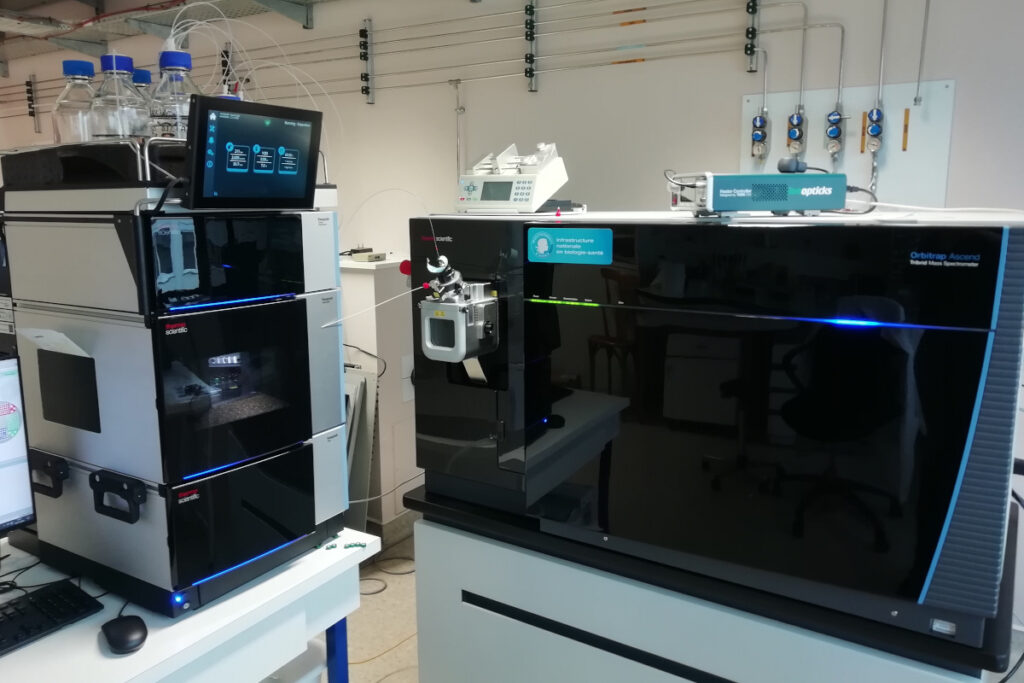
Chromatography
NanoRSLC U3000 system (Thermo Fisher)
The four RSLC systems were installed in 2014 and 2016. They are configured in nano configuration and coupled to one of our mass spectrometers.
The preferred setup involves trapping peptides on a PepMap trap column, followed by separation on a 25 cm Aurora column (IonOpticks), using a gradient ranging from 30 minutes to two hours depending on proteome complexity. For deep proteome coverage, a 60 cm Aurora column (IonOpticks) can be used with longer gradients (4 hours).
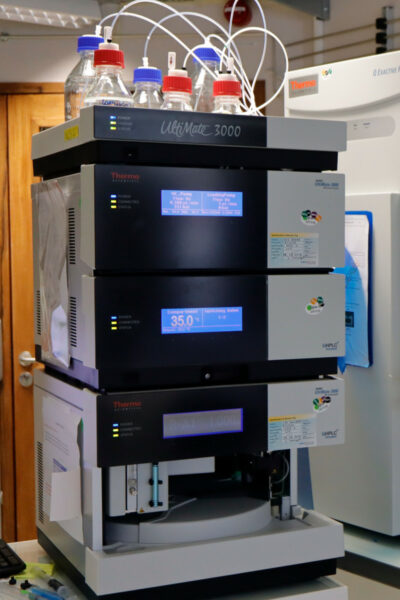
Neo Vanquish (Thermo Fisher)
The Neo Vanquish system was installed in 2023 and is coupled to the Ascend mass spectrometer. It can be configured in either nano or capillary mode, depending on the project requirements—such as bottom-up or middle/top-down proteomics applications).
The preferred nano setup involves trapping peptides on a PepMap trap column, followed by separation on a 25 cm Aurora column (IonOpticks), using a gradient ranging from 30 minutes to two hours depending on proteome complexity.
For middle and top-down application, the set-up depends on the project.
EvosepOne (Evosep)
The Evosep One system was installed in 2023. This system enables to load the sample on disposable trap columns (Evotips) and to analyse up to 100 samples a day. It is dedicated to biomarkers discovery projects (involving large cohorts of samples) where throughput, reproducibility and robustness are necessary. Depending on the required throughput, either 5cm or 15cm columns can be used.
Sample Automation
EVO 150 (Tecan)
This automate is equipped with gripping and pipetting arms as well as incubators. It was installed in 2007 and is dedicated to in-gel digestions.
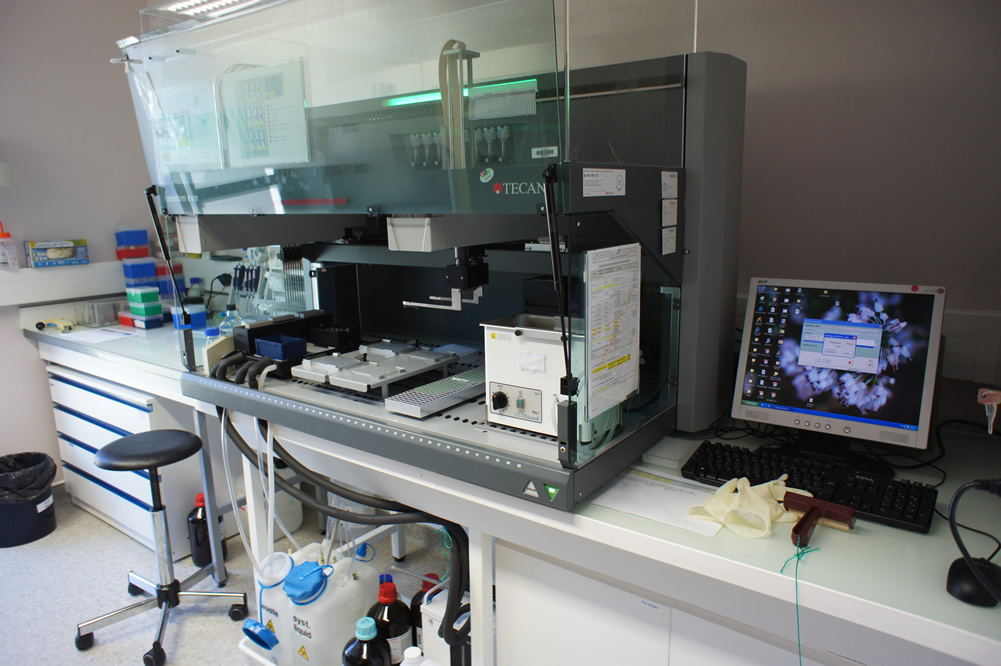
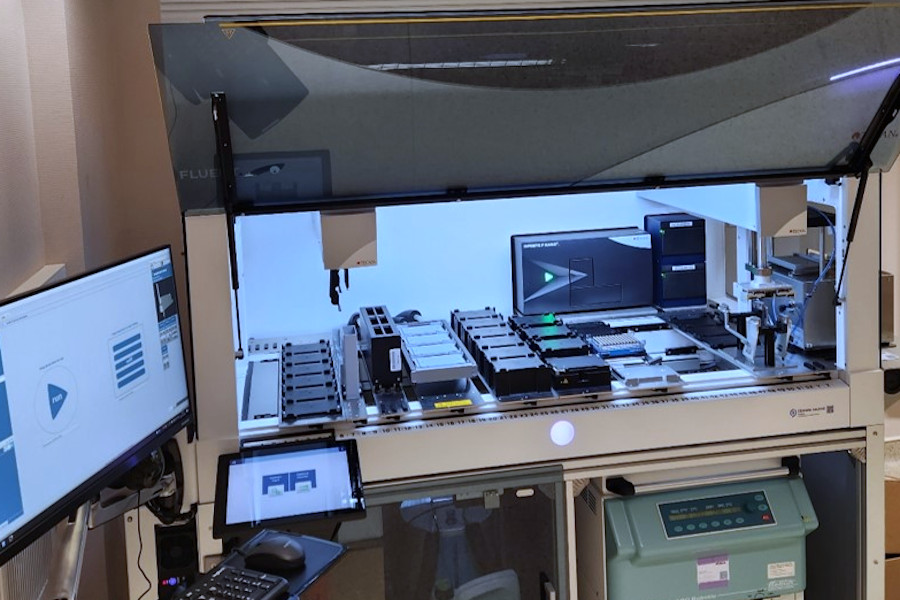
Fluent 780 (Tecan)
This automate is equipped with gripping and pipetting arms, incubators, plate reader, centrifuge, positive pressure module and was installed in 2023. The biochemical workflows (protein and peptides quantitation assay, in solution and sp3 digestion, phosphopeptides and Xlinked peptides enrichment, desalting) currently performed manually in the lab will be progressively shifted to the automate.
Highligths
Orbitrap Exploris 480 Newborn !
The FAIMS interface has just been installed on our new Orbitrap Exploris 480. This new MS instrument will enlarge our...
Read More
